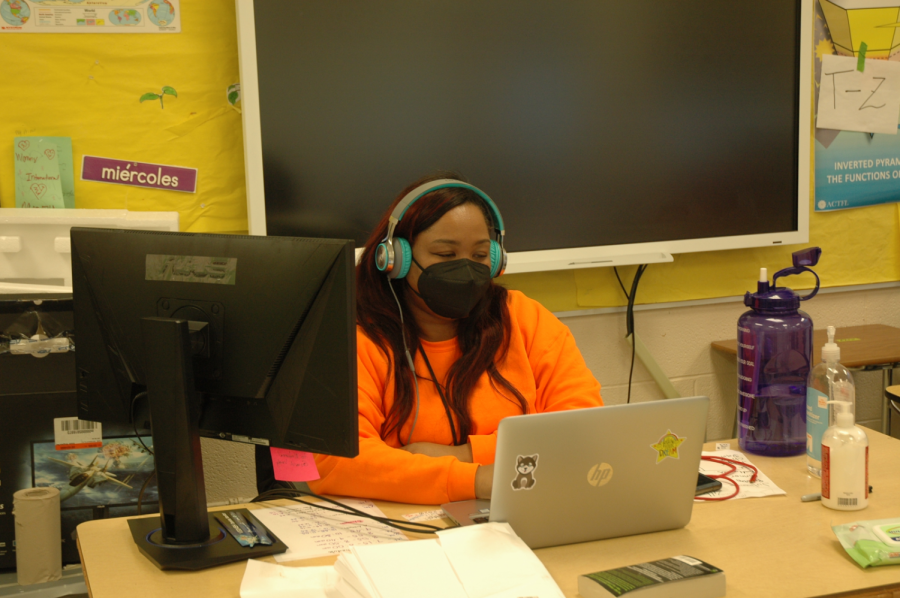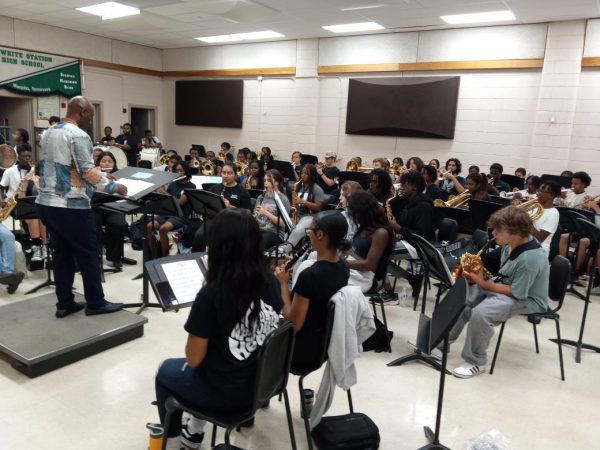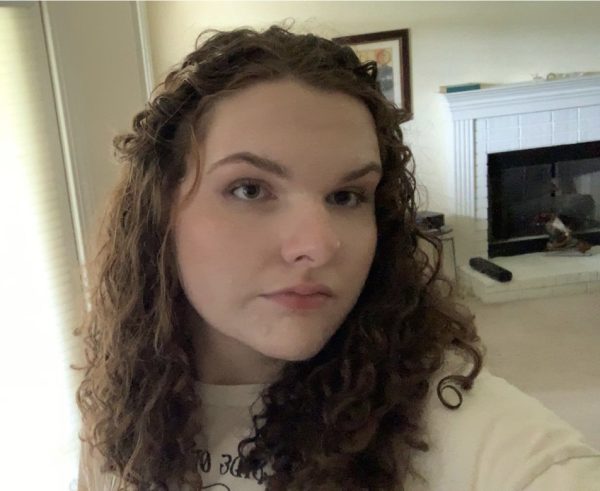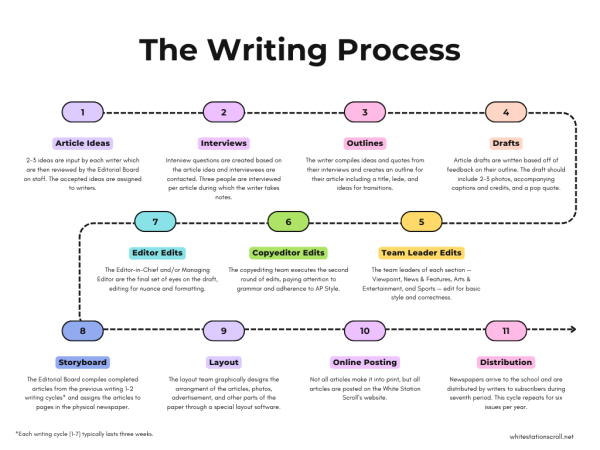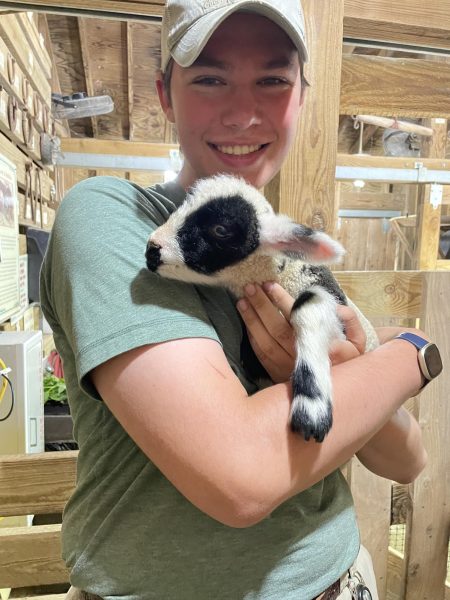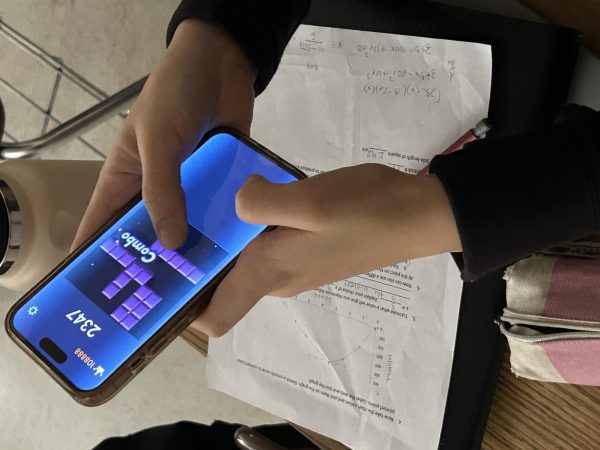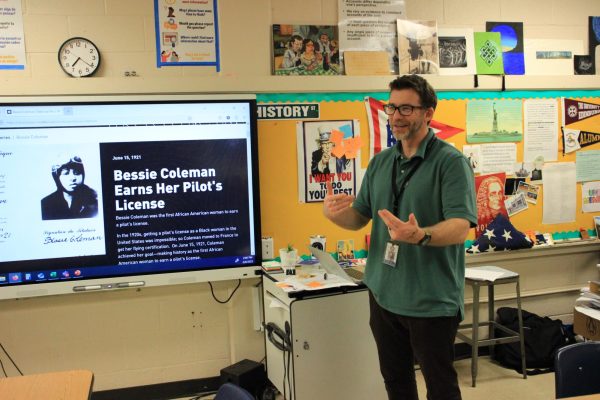Teachers return to in-person learning
Spanish teacher Simone Gray incorporates dual monitors to allow for multitasking. PPE and headphones are a must when surrounded by students in the same room, but different virtual classes.
Students and teachers alike fill formerly empty classrooms with the familiar cacophony of keyboard clacking, dry erase marker squeaking and pencil scratching. Per Shelby County Schools’ regulations, classrooms are occupied by no more than ten students in order to allow for social distancing. Because students, both in-person and virtual, continue to learn via Microsoft Teams, teachers now face a new problem: how do they teach remotely and locally simultaneously? Teachers like Emilee Chesnut have adapted their teaching style to cater to all students, no matter how close or how far apart they may be.
“As a Spanish teacher, it has been hard to practice all modes of communication consistently,” Chesnut said. “I have had to release some of my reigns and let my students work and practice independently more. I have made my classroom more student-centered than previous years. It’s been challenging as a teacher to not be able to directly see what my students are doing. Thankfully, they have been doing fine so far.”
In addition to the change of setting for teachers, high schools district wide have reverted to their original 7:15 a.m. start time as of Mar. 1. Multiple studies by the University of Washington, the American Academy of Pediatrics and others have suggested that older students need more sleep than younger students to accommodate their biological needs.
“I hate it,” AP Physics teacher Maridee Cornell said. “The district had a chance to adjust and have the younger students start earlier and the older students start later, and they failed to act as all educational research suggests. My first period students will suffer especially with the added issues of internet and connectivity.”
For teachers, it often feels as though they are talking to themselves, even when students are in their classrooms. Teachers are forced to anticipate questions from students, rather than the students asking themselves.
“I would hope that we can get to a point where we can actually have everybody back in school,” AP Calculus AB and honors pre-calculus teacher Harold Yager said. “ … I think a lot of people miss that interaction and being able to talk and meet, and I think a lot of people would be more receptive to opening up and asking a question in class. Whereas it’s difficult to do it when you’re online because you’ve got to turn your mic on. I would hope we would get back to that, but I don’t know if we ever will.”
Unlike students, teachers were not given the courtesy of choosing whether or not to return to in-person learning. With all teachers in the building, adaptations must be made, both physically and mentally.
“My advice for students returning to school would be to be respectful and courteous of others, always,” Chesnut said. “I think now more than ever we have become more cautious of how others feel and think and I hope we all carry these actions into the future. Some people in the building really do not want to be there and are scared of getting sick. Be kind and respectful towards them and others. We all have to work together as a team to get through this. I would like to shout out the faculty for always being ready to tackle whatever is thrown our way. Our goal at the end of the day is to support our students and I think we are doing just that.”
At the end of the day, teachers miss their students and the interesting dynamic that a fully in-person class can give. At a diverse school like White Station, students and teachers from all walks of life and backgrounds are able to meet and cohabitate daily. When fully in-person, teachers were able to help their students stay motivated and provide them with the tools that they need to succeed. A hybrid environment makes this much more difficult for teachers.
“I want them all here,” Cornell said. “I understand that family situations and personal opinions do not always agree with that. Some students are thriving in the virtual world. They have embraced the independent learning. They are organized and can set priorities. I agree that maybe they should stay virtual for the year. But some students need the help with those things.”
Teachers can only do so much to help their students; they can not submit assignments for them. A physical disconnect between students and teachers’ interactions limits the extent of their influence on students’ efforts and grades. After more than a year in the pandemic, teachers are looking forward to seeing their students again and are hoping to return to normality.
“They are not necessarily ready for independent work and they need the structure and pressure of the teacher in the classroom to watch, observe, or interact,” Cornell said. “Students at school need to embrace the routine and the rules. Soon, we can all do this together.”
Your donation will support the student journalists of White Station High School. Your contribution will allow us to purchase equipment and cover our annual website hosting costs.



































